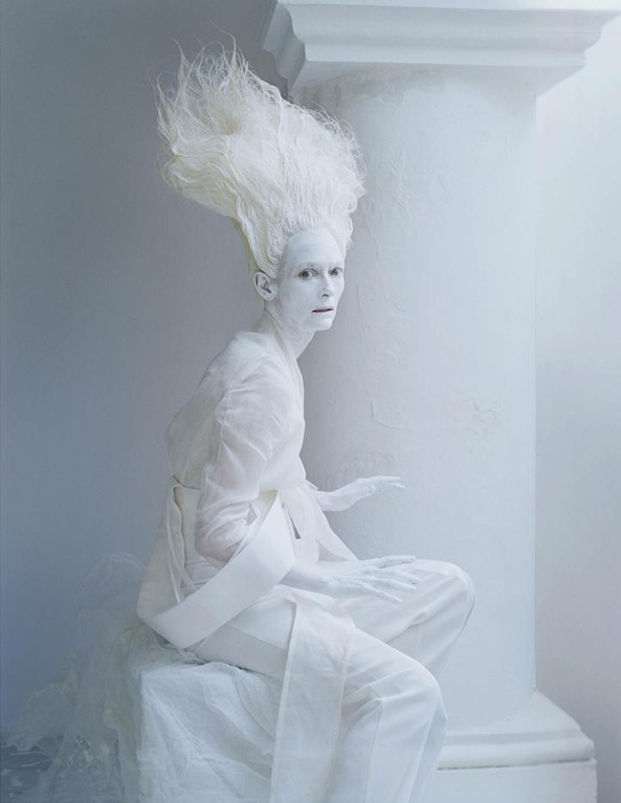
Tilda Swinton by Tim Walker, Xilitla, Mexico, 2013. Styled by Jacob K
Between the ages of about nine and twenty-five Tilda Swinton rarely appeared in photographs. “My shyness made me crafty,” she told Time, “and I got very good at sliding sideways out of the frame at the last minute.” Today, she embraces the activity she once abhored, and being photographed is the source of much greater satisfaction, she confides, than she feels in the role of actress. If it were left to Swinton to decide what she should be called, she would opt for “artist’s model.” This isn’t self-deprecation but a measure of how significant these photographic manipulations of her eccentric and otherworldly persona have become for her.
The fashion scene idolizes Swinton as an icon of contemporary style. Tall and lithe of frame, she looks stunning in the clothes she inhabits like thought games made visible, but her most compellingly personal pictures, like this one by Tim Walker, transcend the category of fashion. They are idiosyncratic visual performances somewhere on the same spectrum as her extreme transformations of appearance when acting, and they convey the impression of belonging to her own private project. Her performance piece The Maybe, where she sleeps in public, in a glass case in a gallery (most recently at MoMA), courts the viewer’s inspection with the same fearlessness. Walker’s photographs of Swinton, whose striking features, both elfin and androgynous, are not those of a conventional model, have a fundamentally different character from his other fashion pictures, even if the fantastical stagings make them appear superficially similar.
In May 2013, W magazine published “Stranger than Paradise,” a set of exquisitely styled studies of Swinton shot by Walker at Las Pozas (The Pools) in Xilitla, Mexico, a fabulous estate in the rainforest, with concrete sculptures and follies, built by Edward James (1907–1984), a hugely wealthy British collector of Surrealist art. Garbed as a diaphanous wraith, Swinton perches next to one of the squat columns in the house nearby that belonged to Plutarco Gastelum Esquer, James’s local collaborator and close friend. The Surrealist artist Leonora Carrington visited Las Pozas and painted a mural at Plutarco’s house, and in Walker’s picture, Swinton reimagines herself, as she told W, as one of Carrington’s ethereal figures, “halfway transmuted into a plant, a flame, and an unknown beast.”Swinton has said she intended to be a writer, and that it was a mistake she ever became a performer. In the moment of enactment, though, she experiences the closeness of the mental muscles used for performance and writing. She looks both electrified to host this capacity, and startled to be able to unleash it with such ease.
See all Exposure columns
